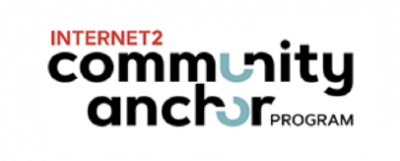Community Wi-Fi Grant Program
CEN Announces Public Review of Program Guidance for $10M Community Wireless (Wi-Fi) Grant Program
Hartford, CT—The Connecticut Education Network (CEN) is pleased to announce that the $10M Community Wireless (Wi-Fi) Grant Program Guidance is now available for public review and comment.
Public Participation and Comment Period
CEN values the input of its communities and stakeholders. The public review period provides an opportunity for feedback and suggestions that can help refine and improve the final program guidelines. Interested parties are encouraged to review the document in detail and submit their comments.
About the Community WiFi Program
The Community Wi-Fi program is a $10 million competitive reimbursement subgrant under the CEN Broadband Infrastructure Program, funded by the ARPA Capital Project Fund and supported by Governor Lamont’s Connecticut’s Plan for the American Rescue Plan of 2021. The program enhances internet infrastructure for work, education, health, and wellness. By leveraging the CEN infrastructure platform, the program will expand high-quality, secure, 802.11-based wireless internet access through community anchor institutions (CAIs) across Connecticut, with a focus on underserved and economically disadvantaged communities. The program also promotes the adoption of eduroam®, a global platform for secure, authenticated Wi-Fi access, further extending connectivity and support to users across institutions. Any CAI can apply for grant funds to attach to CEN and expand high-quality and secure WiFi in their communities.
The Program Guidance outlines critical information for applicants including eligibility criteria, application procedures, and project requirements. Key sections of the guidance cover technical specifications, risk mitigation, community impact, and sustainability plans ensuring that proposed projects not only meet current needs but are also viable in the long term.
How to Access the Program Guidance and Submit Comments:
- The Program Guidance can be accessed via the CEN website at https://ctedunet.net/cwifi/
- Comments can be submitted via the CEN website or at cenwifigrant@cteducation.net
- The deadline for submitting comments is 1/24/2025
About The Connecticut Education Network (CEN):
CEN is Connecticut’s premier open-access, high-capacity internet, cloud, cybersecurity, and network services provider. A mission-driven, member-focused organization, CEN operates a statewide, high-performance broadband infrastructure platform that delivers reliable, ultra-low latency, high-speed internet, and advanced technology services to community anchor institutions. Established in 2000, CEN has been a leader in advancing the capabilities of its members, ensuring equitable access to secure and dependable connectivity that supports education, research, government, digital citizenry, aggregation, and collaboration. Known for its exceptional value, performance, and personalized service, CEN is the provider of choice for organizations that demand top-tier network performance, cybersecurity, and a commitment to bridging the digital divide.
"Public input is critical to ensuring that the CEN remains responsive to the needs and concerns of our communities,” Department of Administrative Services Commissioner Michelle Gilman said. “We value every voice in this dialogue, as it helps to shape policies and initiatives that truly reflect the priorities of the people we serve. I encourage individuals and organizations to review the program guidance and offer feedback."
‘The Community Wireless (Wi-Fi) Grant program is part of CEN’s ongoing efforts to close the digital divide and ensure equitable access to high quality broadband and the internet for our citizens.’ said Ryan Kocsondy, Executive Director of CEN. ‘ We are proud to play a role in furthering digital equity and happily seek input in this new grant program.’
For more information about the Community Wireless (Wi-Fi) Grant and other CEN initiatives, please visit https://ctedunet.net/cwifi/, attend one of our info sessions, or contact us at cenwifigrant@cteducation.net.

 “We are thrilled for the opportunity to help teachers bring unique, interactive learning opportunities to their classrooms – and we are so thankful for their brave, selfless service, especially during the past two years,” said Stephanie Stenberg, Internet2 Community Anchor Program director. “This program also highlights the importance of nonprofit state and regional research and education networks, which do so much more than provide schools with lightning-fast internet connections. Their mission-driven service means that connected schools get hands-on network help and a community of interest to share resources with other connected schools, libraries, museums, and institutions.”The scholarship program was open to K-12 teachers from schools that connect to Internet2’s national network through their
“We are thrilled for the opportunity to help teachers bring unique, interactive learning opportunities to their classrooms – and we are so thankful for their brave, selfless service, especially during the past two years,” said Stephanie Stenberg, Internet2 Community Anchor Program director. “This program also highlights the importance of nonprofit state and regional research and education networks, which do so much more than provide schools with lightning-fast internet connections. Their mission-driven service means that connected schools get hands-on network help and a community of interest to share resources with other connected schools, libraries, museums, and institutions.”The scholarship program was open to K-12 teachers from schools that connect to Internet2’s national network through their